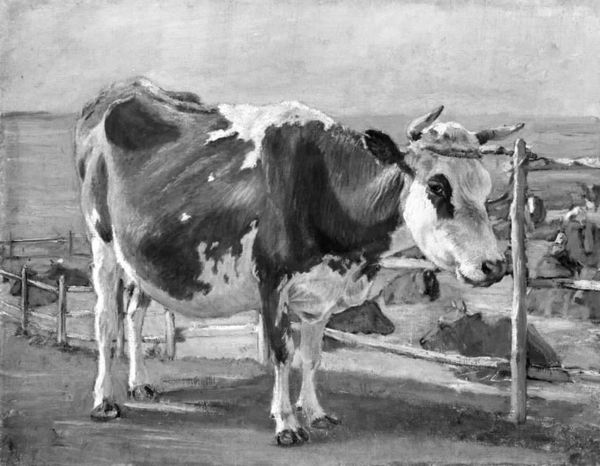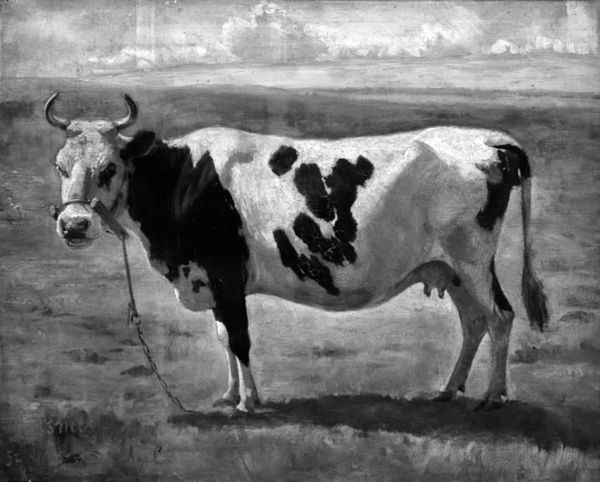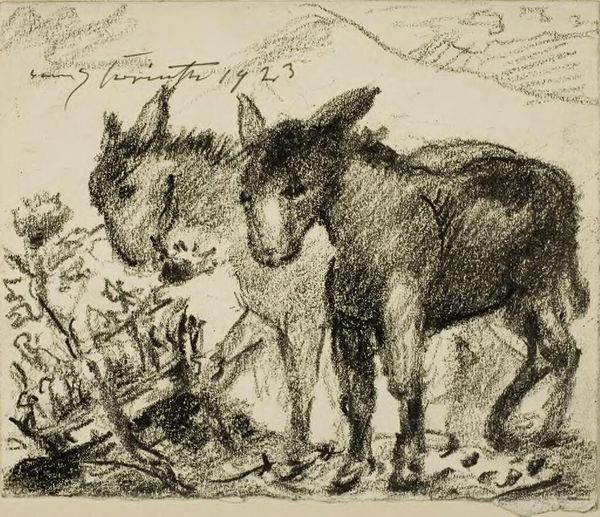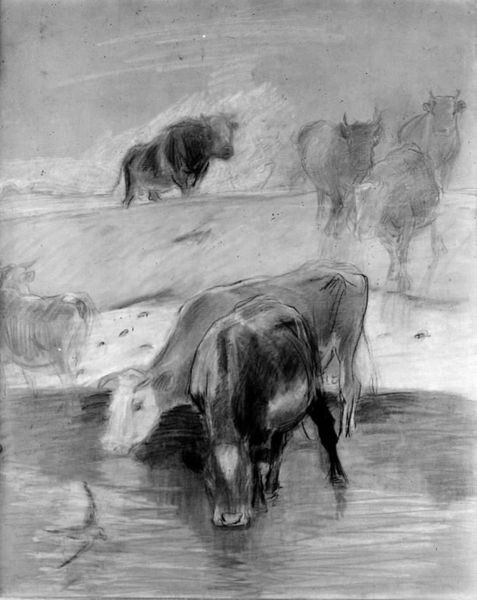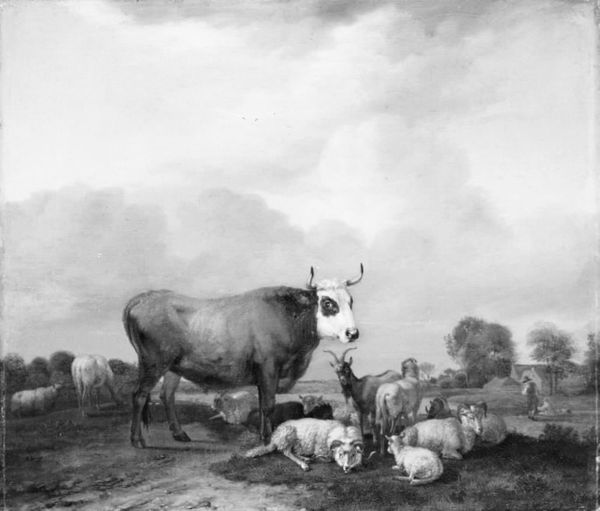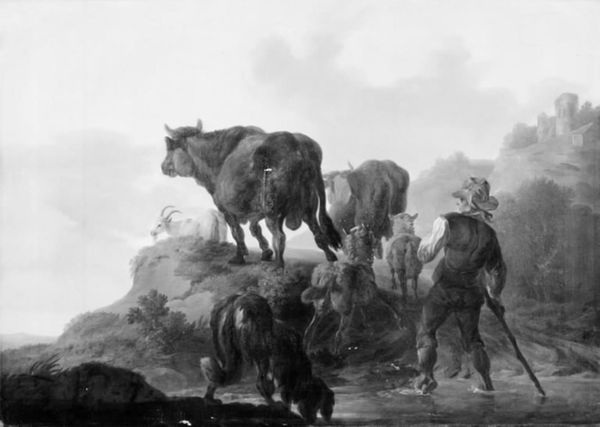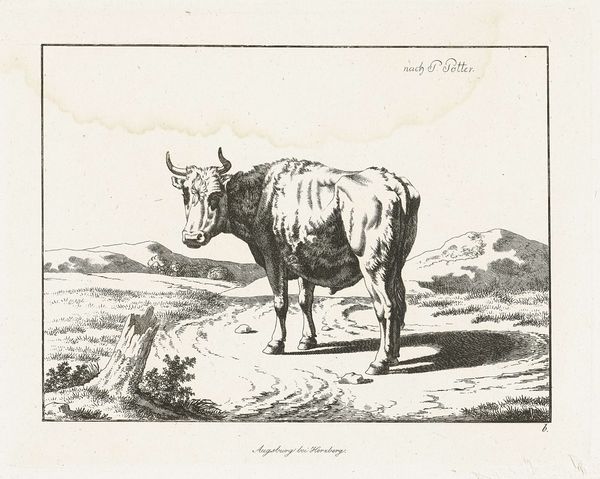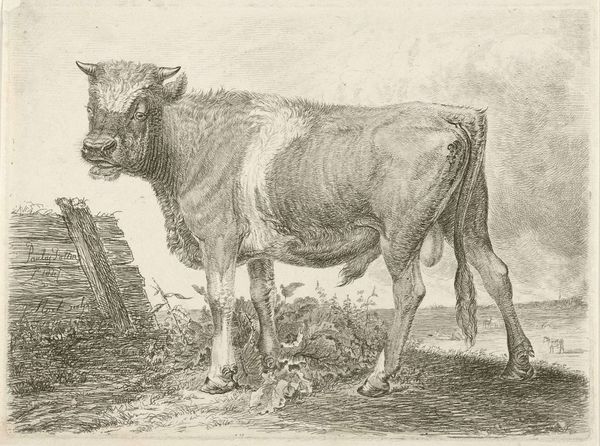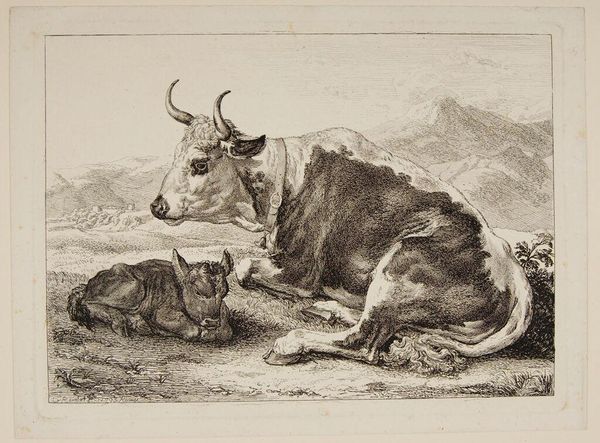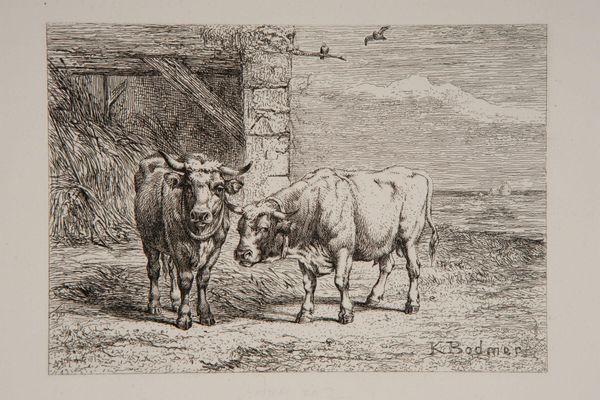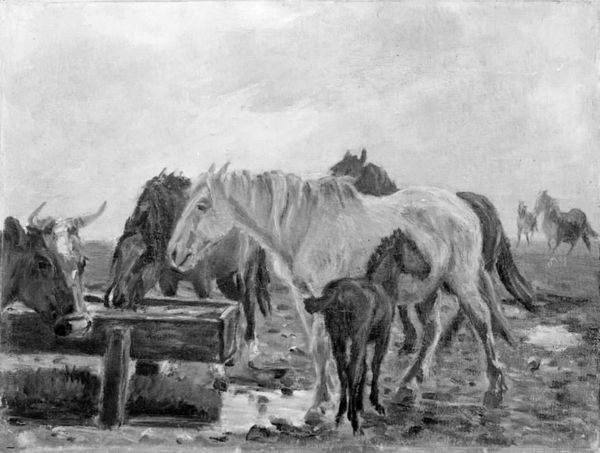
drawing, pencil
#
drawing
#
landscape
#
landscape
#
pencil
#
realism
Copyright: Public domain
Editor: We’re looking at “Taureau Dans Les Alpes” by Eugène Burnand, created with pencil as a drawing. The contrast between the bull in the foreground and the jagged peaks makes the mountains feel incredibly imposing. How do you read the composition here? Curator: It's fascinating how Burnand has constructed this landscape, isn't it? Notice how the bull, placed prominently, doesn’t dominate but rather anchors the viewer's eye, creating a point of departure. Then, the gaze is propelled upwards following the ascending lines of the mountains. Are we looking at an expression of scale, a visual interplay between the organic form and geometric peaks? Editor: It’s like a visual game of push and pull, almost like the bull is breathing the mountains into existence! Do you see anything particularly striking in his mark-making? Curator: Yes, precisely. Observe the incredibly varied textures achieved purely through the density and direction of the pencil lines. The fur of the bull is rendered with delicate, almost feathery strokes, while the mountains possess a coarser, more rugged quality through bolder, overlapping hatches. It begs the question: How does the materiality of the drawing, the very act of applying graphite to paper, shape our understanding of "Taureau Dans Les Alpes"? Editor: I hadn't considered the materiality so deeply, focusing mainly on the realism. It really shifts my perspective on what Burnand might have been trying to communicate. Curator: Precisely. It’s the interplay of form, texture, and line that constructs meaning here, rather than a reliance on narrative. Editor: I'm definitely seeing more to it now – it's a successful piece, whatever the original meaning might have been.
Comments
No comments
Be the first to comment and join the conversation on the ultimate creative platform.
